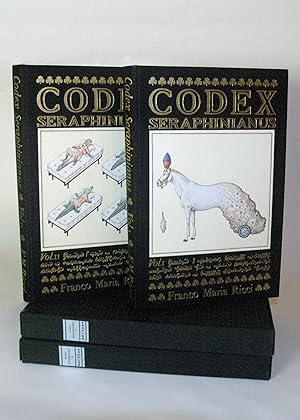Luigi, First Edition (Over 6,100 results)
Product Type
- All Product Types
- Books (6,111)
- Magazines & Periodicals (22)
- Comics (24)
- Sheet Music (20)
- Art, Prints & Posters (12)
- Photographs (1)
- Maps (2)
-
Manuscripts &
Paper Collectibles (2)
Condition
Binding
Collectible Attributes
- First Edition
- Signed (251)
- Dust Jacket (1,314)
- Seller-Supplied Images (3,630)
- Not Printed On Demand
Free Shipping
Seller Location
Seller Rating
-
Pomona Italiana, Ossia trattato degli Alberi Fruttiferi, di Giorgio Gallesio. 4 vols. First edition.
Published by Pisa: Co' Caratteri de' FF. Amoretti, Presso Niccoló Capurro, 1817- [1839], 1839
Seller: Wittenborn Art Books, San Francisco, CA, U.S.A.
First Edition
Condition: Good. 4 folio volumes, 31 x 44.4 cm. Large paper copy. 19th Century half green morocco with marbled boards. Some pages with stains and foxing. but most very fresh. The plates were printed in colors which was then much more expensive and always more elegant than handcoloring black inked printed pages. With 155 color stipple engravings. The plates are not numbered but some copies have as many as 163 plates.The Italian artists are : Giuseppe CAROCCI, Alessandro CONTARDI, Francesco CORSI, Paolo FUMAGALLI, Luigi GARIBBO, Luigi GIARRE, Carlo LASINIO, Tomaso NASI, Giuseppe PERA, Stefano RINALDI, Bernardino ROSASPINA, Antonio SERANTONI, Antonio VERICO?engraved after A. BASOLI, Giuseppe BAZOLI, Luigi BISI, Carolina & Isabella BOZZOLINI, Giuseppe BUCHERELLI, D. DELPINO, Pellina Piuma GALLESIO, Sofia GIORDANO, Ferdinando MORI, Domenico del PINO, Daniele DEL Ré, Antonio SERANTONI, M. VERNERO?OCLC Number / Unique Identifier:558753573.FIRST EDITION OF THE FINEST ITALIAN WORK ON FRUIT. "It is extremely rare and its interest is enhanced by the knowledge that it is one of the few examples outside of England in which aquatint has been used successfully" (Dunthorne). "Before Gallesio began this enormous work, published in fourty-one parts from 1817 to 1839, he had already published his Traité du Citrus, which explains the reason for the lack of oranges and lemons in a catalogue of Italian fruit. Gallesio's fruit garden in Savona was not his main occupation, for he was a lawyer and a civil servant as well as a botanist, whose experiments on the development of varieties of fruit were quoted later by Charles Darwin. Gallesio's Pomona was a major contribution to the study of pomology in Italy" (Raphael Oak Spring Pomona). Dunthorne 118; Great Flower Books p. 57; Raphael Oak Spring Pomona 52; Nissen BBI 683. 4 volumes in-folio, demi-maroquin vert, dos à nerfs orné (reliure fin XIXe s.).Brunet, II, 1466 (« Pour la beauté de l'exécution, cet ouvrage ne le cède en rien à ceux du même genre que l'on a publiés en France depuis une cinquantaine d'années ») ; Dunthorne, 118 (« A very fine work » ; Great Flower Books, 92-95 ; Oak Spring Pomona, 52 ; Nissen, BBI, 683 (3).
-
Le antichità romane ossia raccolta delle più interessanti vedute di Roma antica
Published by presso l'autore, 1819-, Rome, 1823
Seller: Liber Antiquus Early Books & Manuscripts, Chevy Chase, MD, U.S.A.
First Edition
Hardcover. Condition: Fine. FIRST EDITION, first issue. A fine, complete set with all 101 engraved plates. Bound in 19th c. diced calf in two volumes (corners bumped, light wear to hinges and head and foot of spines). The boards are framed by multiple gold rules with additional blind-ruling and roll-tooling. Attractive floral roll-tooling to turn-ins. Spine with gold-ruled compartments, diced in blind, with title, author, date and volume numbers tooled in gold. Contents in fine condition, the plates on sturdy guards, with two added manuscript title pages (19th c.) in pen and wash. First plate in Vol. I foxed, occ. marginal foxing and light soiling, rarely affecting the images. Tiny spots of red wax to fold of one plate. These magnificently large and stunning views of the Eternal City, created by the Ravenna architect Luigi Rossini, are by far the most spectacular of those issued in the nineteenth century. The subjects include temples, public baths, basilicas and other monuments, both modern and antique; many that had been recently excavated are known only from this work. The collaboration of Bartolomeo Pinelli is evident in the costumed figures, which enliven architectonic and archaeological views. Luigi Rossini was the last of the great artists to produce large-scale etched views (vedute), plans, and speculative reconstructions of Rome and its ancient remains. His inspiration was the undisputed master of such images, Giovanni Battista Piranesi, and it was he that the young Rossini set out to emulate even as he developed his own artistic style and identity. Rossini's artistic and philosophical objectives -and therefore the images that he produced- were markedly different from those of Piranesi. His images reflected the new realities of the post-Napoleonic era, and reflected the development of a more modern, scientific archaeology, expressed in extraordinarily beautiful and powerful images. "With his works depicting Rome through the most significant and evocative images, produced over about a half a century of intense activity, Rossini gradually reshaped the face of the city, depicting with acute and objective attention the features of its complex archaeology and its most attractive locations. While remaining within the context of the veduta, Rossini never ceased documenting the archaeological remains with scholarly accuracy, introducing some substantial innovations compared to previous interpretations. By depicting yet again the landscapes and monuments of Rome and its surroundings, while recording the most picturesque and distinctive aspects of its everyday life, his work moved closer to a Romantic vision, while seeking to present an extremely meticulous documentation based on studies of the sources and direct examination of the latest discoveries, illustrating the restoration work being carried out, reconstructing the plans and elevations of buildings and sites, so making him a protagonist of the cultural elaboration of Rome in the early nineteenth-century. "Through his landscape and archaeological views, Rossini interpreted Rome as a privileged place for objective, scholarly and poetic evocations, translated into etchings with the utmost technical virtuosity, and disseminated through the powerful expressive medium of print."(Nicoletta Ossanna Cavadini, 'Rossini Architect and Engraver: from views of antiquities to the Romantic spirit' in "Luigi Rossini, Il Viaggio Segreto", 2014) "Like Giovanni Battista Piranesi, Rossini was an observant topographer but also a scrupulous archaeologist; like Carlo Labruzzi he was also a neoclassicist. In Rossini's pictures the suffering humanity of Piranesi's views has disappeared. From Piranesi, Rossini takes precise topographic information, the understanding of ancient building materials, and knowledge of places. Piranesi's method of archaeological research is Rossini's principal cultural and artistic reference. Thus Rossini borrows from his predecessor the sotto-in-su views, and like Piranesi he assembles fragments of Roman architecture and inscriptions in an imaginative agglomerate. But Rossini also benefits from the extraordinary archaeological activity carried out by Giuseppe Valadier and others. The freshly uncovered monuments offered additional subjects to the topographic artists working in Rome . The Antichità Romane marks a direct confrontation with Piranesi. In this work Rossini emancipates himself entirely while precisely quoting his predecessor in his title as well as in some of his captions". (Millard, Italian books, pp. 360-366).
-
Notions sur la machine analytique de M. Charles Babbage,' pp. 352-376 in: Bibliothèque Universelle de Genève. Nouvelle Série, Tome 41
Published by Anselin, Paris, 1842
First Edition
First edition. THE FIRST COMPUTER PROGRAMMES. First edition, journal issue, of Menabrea's account of the only public presentation that Babbage ever made concerning the design and operation of the Analytical Engine. "This was the first published account of Charles Babbage's Analytical Engine and the first account of its logical design, including the first examples of computer programs ever published. As is well known, Babbage's conception and design of his Analytical Engine-the first general purpose programmable digital computer-were so far ahead of the imagination of his mathematical and scientific colleagues that few expressed much curiosity regarding it. Babbage first conceived the Analytical Engine in 1834. This general-purpose mechanical machine-never completely constructed-embodied in its design most of the features of the general-purpose programmable digital computer. In its conception and design Babbage incorporated ideas and names from the textile industry, including data and program input, output, and storage on punched cards similar to those used in Jacquard looms, a central processing unit called the 'mill,' and memory called the 'store.' In 1840 Babbage traveled to Turin to make a presentation on the Analytical Engine. Babbage's talk, complete with charts, drawings, models, and mechanical notations, emphasized the Engine's signal feature: its ability to guide its own operations-what we call conditional branching. In attendance at Babbage's lecture was the young Italian mathematician Luigi Federico Menabrea (1809-1896), who prepared from his notes an account of the principles of the Analytical Engine. Reflecting a lack of urgency regarding radical innovation unimaginable to us today, Menabrea did not get around to publishing his paper until two years after Babbage made his presentation, and when he did so he published it in French in a Swiss journal [offered here]. Shortly after Menabrea's paper appeared Babbage was refused government funding for construction of the machine" (). "In keeping with the more general nature and immaterial status of the Analytical Engine, Menabrea's account dealt little with mechanical details. Instead he described the functional organization and mathematical operation of this more flexible and powerful invention. To illustrate its capabilities, he presented several charts or tables of the steps through which the machine would be directed to go in performing calculations and finding numerical solutions to algebraic equations. These steps were the instructions the engine's operator would punch in coded form on cards to be fed into the machine; hence, the charts constituted the first computer programs [emphasis ours]. Menabrea's charts were taken from those Babbage brought to Torino to illustrate his talks there" (Stein, Ada: A Life and a Legacy, p. 92). ABPC/RBH list only the OOC copy (Christie's, 2005). In 1828, during his grand tour of Europe, Babbage had suggested a meeting of Italian scientists to the Grand Duke of Tuscany. On his return to England Babbage corresponded with the Duke, sending specimens of British manufactures and receiving on one occasion from the Duke a thermometer from the time of Galileo. In 1839 Babbage was invited to attend a meeting of Italian scientists at Pisa, but he was not ready and declined. "In 1840 a similar meeting was arranged in Turin. By then Babbage did feel ready, and accepted the invitation from [Giovanni] Plana (1781-1864) to present the Analytical Engine before the assembled philosophers of Italy . In the middle of August 1840, Babbage left England . "Babbage had persuaded his friend Professor MacCullagh of Dublin to abandon a climbing trip in the Tyrol to join him at the Turin meeting. There in Babbage's apartments for several mornings Babbage met Plana, Menabrea, Mosotti, MacCullagh, Plantamour, and other mathematicians and engineers of Italy. Babbage had taken with him drawings, models and sheets of his mechanical notations to help explain the principles and mode of operation of the Analytical Engine. The discussions in Turin were the only public presentation before a group of competent scientists during Babbage's lifetime of those extraordinary forebears of the modern digital computer. It is an eternal disgrace that no comparable opportunity was ever offered to Babbage in his own country . "The problems of understanding the principles of the Analytical Engines were by no means straightforward even for the assembly of formidable scientific talents which gathered in Babbage's apartments in Turin. The difficulty lay not as much in detail but rather in the basic concepts. Those men would certainly have been familiar with the use of punched cards in the Jacquard loom, and it may reasonably be assumed that the models would have been sufficient to explain the mechanical operation in so far as Babbage deemed necessary. Mosotti, for example, admitted the power of the mechanism to handle the relations of arithmetic, and even of algebraic relations, but he had great difficulty in comprehending how a machine could handle general conditional operations: that is to say what the machine does if its course of action must be determined by results arising from its own previous calculations. By a series of particular examples, Babbage gradually led his audience to understand and accept the general principles of his engine. In particular, he explained how the machine could, as a result of its own calculations, advance or back the operation cards, which controlled the sequence of operations of the Engine, by any required number of steps. This was perhaps the crucial point: only one example of conditional operations within the Engine, it was a big step in the direction of the stored program, so familiar today to the tens of millions of people who use electronic computers. "In explaining the Engines Babbage was forced to put his thoughts into ordinary language; and, as discussion proceeded his own ideas crystallized and developed. At first P.
-
Le Antichita Romane Ossia Raccolta Delle Piu Interessanti Vedute Di Roma.
Published by 1819-1823, Rome (Italy)., 1819
Seller: Alexandre Antique Prints, Maps & Books, Toronto, ON, Canada
First Edition
Edition : First Edition (scarce) , Period half gilt brown morocco over marbled boards. Upper board loose, upper and lower parts of the spine are missing., As his predecessor Giovanni Battista Piranesi, Rossini focused on extant antique Roman architecture and excavations in Rome and its environs, and rendered in exquisite detail classical architecture of Rome and its surrounding countryside. In contrast to Piranesi, he made greater use of the bucolic settings in his etchings of Roman ruins. His images of the architectural masterpieces of ancient Rome, including the Pantheon, the Coliseum, the Appian Way.etc., have greatly influenced architects, artists, writers, and other connoisseurs of Roman culture up to the present day. The figures give a contemporary feel to the antiquities and were worked on by the artist Bartolomeo Pinelli. , Size : Elephant oblong Folio, Bound without the title as so often. 101 fine engraved plates of Rome, plates complete. All plates are unnumbered thus first edition as the later edition of 1829 has the plates numbered. First and last plates slightly creased otherwise a near fine example of this scarce First Edition work by Rossini. The plates are clean and crisp.
-
12 [dodici] stampe a mano | arte concreta [.] Testo di | Giuseppe Marchiori
Published by Libreria A. Salto Editrice,, 1948
Seller: Libreria Antiquaria Pontremoli SRL, Milano, MI, Italy
Book First Edition
Milano, Libreria A. Salto Editrice, 1948, dicembre, Edizione originale. Esemplare numero 25/30, in ottime condizioni di conservazione (normali lievissime fioriture ai bordi e brunitura al dorso della cartella), completo di tutte le tavole numerate e firmate. Tiratura di soli 30 esemplari numerati per questa rarissima cartella che rappresenta l atto di nascita del Movimento Arte Concreta. Nell immediato dopoguerra, l architetto Gianni Monnet convince i proprietari della Libreria Salto attiva dal 1933 come libreria specializzata in «architettura e decorazione» a destinare una "saletta" a fini espositivi: «Il giorno 22 dicembre 1948, nella sala messa a disposizione dai Salto, si apre la Mostra di 12 stampe a mano d arte concreta firmata dai pittori Dorazio, Dorfles, Fontana, Garau, Guerrini, Mazzon, Monnet, Munari, Perilli, Soldati, Sottsass e Veronesi [ ]. Il sobrio cartoncino d invito annuncia la mostra nella nuova sede di quella che è ancora chiamata "Libreria artistica industriale A. Salto" [ ] ove si vendono solo "libri d arte architettura decorazione arredamento pubblicità". È una mostra prenatalizia allestita per offrire opere di basso costo in periodo di regali. Sarà invece l atto di fondazione di una storia durata dieci anni e destinata a incidere profondamente sugli sviluppi dell arte italiana» (Maffei, p. 16). Monnet mira a riunire tutti i non-figurativi italiani in un occasione editoriale, prima che espositiva. Da una lettera inviata il 25 ottobre ad Armando Pizzinato emergono importanti dettagli realizzativi: «I disegni di Soldati e Garau, ad esempio, vedi che sono facilmente ripetibili, una volta ricalcato il disegno, non si tratta altro che di dare tinte piatte: dovendone fare solo 30 copie non vale la spesa di fare i clichés del "po[ch]oir". Per il suo Sottsass si propone [ ] di far fare 30 litografie delle sole righe nere, dopo diventa un lavoro ben da poco dare sulle copie a mano il giallo e l arancio, con inchiostri di china colorati. La litografia ad un solo colore non costa granché [ ], ma qui a Milano abbiamo trovato una stamperia che riproduce clichés in lamiera d acciaio, disegnati direttamente da noi con matita o inchiostro come la litografia, si è vincolati a una dimensione perché il foglio non può essere maggiore di 23 x 30 [ ] (nel nostro caso si tratterà di eseguire le copie su foglietti da incollare sul cartoncino: come del resto hanno fatto quasi tutti). Le soluzioni sono tante: Munari, ad esempio, intaglierà personalmente in legno la sua forma nera» (Caramel, p. 27). In un contesto di forzata economia «il mercato è tutto da rifare», aggiungerà poco dopo nella stessa lettera ciascuna delle stampe viene realizzata in diverse soluzioni, con abbondanza di interventi a mano. Se per il «Negativo positivo» di Munari si tratta di una xilografia impressa direttamente sulla carta (il «cartoncino» della lettera), il «Disegno spaziale» di Lucio Fontana è una vera e propria «gouache su carta», parente stretta degli «ambienti spaziali» realizzati con questa tecnica, per lo più in azzurro, nel 1948; tutte le altre «stampe» sono composte su fogli successivamente applicati alla tavola bianca, in tecniche miste. -- L importanza di questa rarissima cartella, che nella sua espressione collettiva trascende le vicende dei singoli artisti, è tuttavia rafforzata da almeno tre presenze che oggi a distanza di settant anni esatti riconosciamo come stagliarsi ben oltre il decennio del M.A.C.: per Lucio Fontana si tratta della prima grafica in assoluto, registrata come U-1 nel catalogo ragionato Ruhé & Rigo, sezione «Unique works & hand-made editions». Scrive Crispolti nell introduzione al catalogo generale (I, p. 17b): «Fra il 1948 e il 49 il tema spaziale per Fontana acquista anche una precisa iconografia: quella del vortice, come sorta di origine dello spazio stesso. Ricorre in disegni, in gouaches, anche di grandi dimensioni, e in ceramiche». Le altre due presenze che spiccano, anche a livello visivo, sono Bruno Munari, con la sua xilografia «Negativo positivo», una delle prime attestazioni di un motivo poi più volte riproposto, ed Ettore Sottsass che con «Groviglio essenziale» (una violenta esplosione di linee nei toni dell espressionismo astratto prima maniera) offre una preziosa e rara testimonianza della propria ricerca artistica, scarsamente o per nulla registrata a quest altezza cronologica. E. Crispolti, Fontana: Catalogo generale (2 voll. Milano 1986); L. Caramel, Movimento Arte Concreta 1948-1958 (Modena 1987); G. Maffei, M.A.C. Movimento Arte Concreta: opera editoriale (Milano 2004); H. Ruhé & C. Rigo, Lucio Fontana: graphics, multiples and more. (Amsterdam-Trento 2006), n. U-1 In folio (480 x 335 mm la cartella), camicia in brossura molle stampata in nero al solo piatto anteriore, illustrata da una composizione quasi parolibera dei cognomi degli artisti e la semplice indicazione al piede «arte concreta»; contiene un bifolio peritestuale in carta uso mano, seguito da 12 carte di pregio in alta grammatura, ciascuna protetta da una velina semitrasparente in pergamino con stampato in basso a sinistra numero, artista e titolo della tavola. Edizione originale. Esemplare numero 25/30, in ottime condizioni di conservazione (normali lievissime fioriture ai bordi e brunitura al dorso della cartella), completo di tutte le tavole numerate e firmate. camicia in brossura molle stampata in nero al solo piatto anteriore, illustrata da una composizione quasi parolibera dei cognomi degli artisti e la semplice indicazione al piede «arte concreta»;
-
Views in Palestine from The Original Drawings of Luigi Mayer, with an Historical and Descriptive Account of The Country, and its Remarkable Places/ Vues en Palestine.+ Views in The Ottoman Empire, Chiefly in Caramania. TWO VOLUMES IN ONE.
Published by Thomas Bensley for Robert Bowyer,, London, 1803
Seller: FOLIOS LIMITED, Witney, United Kingdom
Book First Edition
Hardcover. Condition: Good. First Edition. (447 x 320 mm), 47 pp., English and French text, 24 aquatint plates finished in handcolour, with description of each plate in English and French [BOUND WITH]: Views in the Ottoman Empire, chiefly in Caramania. (4), 40 pp., with 24 aquatint plates finished in hand-colour, gilt, re-cased with only minor restorations to spine; original red-and-gilt title label and ornaments on spine, Custom brown cloth clamshell box, Plates and text generally very fresh with very minor occasional light spotting, a very pleasant volume. Set printed 1803 -1804. FIRST EDITIONS AND HANDSOME COPIES of Mayer's views of the Holy Land and the Ottoman Empire, including a total of 48 fine aquatint plates. In addition to the magnificent views of cities and ruins, there are many plates of ethnographic interest depicting native costume. Diplomats were in an ideal position to contribute to the spread of knowledge about the countries they visited. Although he was in many respects an amateur, Sir Robert Ainslie compensated his lack of training with his enthusiasm as an orientalist. He was the English ambassador in Istanbul from 1776 to 1792 and became a particular favourite of the Sultan Ahmed IV. He availed himself of his position to assemble a large collection of ancient coins from North Africa, Eastern Europe and the Near East, many of which were published by Domenico Sestini in Leghorn. Ainslie also employed a draughtsman, Luigi Mayer from Rome who had been a pupil of one of the greatest artists of his day, Giovanni Battista Piranesi. In 1792, before accompanying his patron back to England, Mayer toured Egypt, Caramania and Palestine and executed many of the fine drawings. Bibliographic references: Blackmer 1098; Abbey Travel, 369; Gay 2145. Rohricht p. 339; Weber 1, 1101. #20897.
-
Histoire physique de la mer. Ouvrage enrichi de figures dessinées d'après le naturel
Published by aux depens de la Compagnie, Amsterdam, 1725
First Edition
Couverture rigide. Condition: Très bon. Edition originale. Plein vélin rigide estampé à froid de l'époque. Un volume in Folio (367x237 mm), frontispice, (8)-xi-(1 bl.)-173-(1 bl.) pages, et 52 planches dont 10 dépliantes. Une première série numérotées I à XII comportant deux cartes dépliantes dont une du Golfe du Lion, des profils du littoral provençal, et des tableaux, certains enrichis de figures. La deuxième série numérotée I à XL est consacrée aux végétaux marins, et offrent en particulier un très grand nombre de figures de coraux. Petits accrocs à la reliure. Plats légèrement incurvés. Manques en marge du frontispice et d'une planche. Une déchirure réparée page 173 et quelque mouillures marginales. Edition originale en français de ce superbe ouvrage fondateur de l'océanographie. Le comte de Marsili (1658-1730), militaire, géographe et naturaliste italien est considéré comme le fondateur de l'océanographie à la suite de la parution de cet ouvrage. Il effectue des observations de terrain, étudie les fonds marins du Golfe du Lion, la classification des espèces, les courants et les propriétés de l'eau de mer, rappelant que toute sa démarche scientifique est fondée « sur les expériences et les observations que j'ai fait moi-même sur les lieux ». Ses découvertes sur le corail et ses « fleurs » ont retenu toute l'attention des savants, le corail étant depuis l'antiquité classé dans le règne minéral. Or, Marsili remarque que des branches de corail rouge qu'il a récoltées se couvrent de fleurs blanches en quelques heures. Il en déduit que le corail est un organisme vivant, relevant du règne animal, ce qui marque de manière décisive un tournant dans la connaissance du milieu marin. Superbe exemplaire rarissime comme lorsqu'ici avec toutes les planches finement coloriées. References : DSB [IX p.135 : " in 1725 he published the first treatise on oceanography, 'Histoire physique de la mer'. In it he treated problems which until then had been veiled by error and legend. Marsili examined every aspect of the subject : the morphology of the basin and relationships between the lands under and above water; the water's properties (color, temperature, salinity) and its motion (waves, currents, tides); and the biology of the sea, which froretold the advent of marin botany. Among the plants he numbered animals like corals, which before his time had been regarded as inorganic matter."] Norman [1445 : "First edition. The first book devoted entirely to marine science, and the first oceanographic study of a single region.] Koeman [IV, 421: "This work on oceanography contains the first printed chart with depth-lines."] Marsigli conducted an intensive investigation of the Gulf of Lyon in the south of France, taking soundings to obtain a profile of the sea floor, analyzing the relationship of the lands under and above water, studying the water's physical properties (temperature, density, color) and its motions (waves, currents, tides), and describing the marine life of the region. Marsigli was the first to give an account of formation of the continental shelf and slope, and the first to class corals as living beings rather than as inorganic mineral formations. His belief that the land and the sea bed formed a continuous structure was confirmed when he discovered rock strata dipping below sea level at the coast. Marsigli's work prefigured the systematic oceanographic exploration that would begin fifty years later with Captain James Cook's voyage in the 'Endeavor' "]. ___________________________________________________________________________________ ______________________________ENGLISH_DESCRIPTION : Contemporary full blindstamped vellum. Folio (367x237 mm), frontispice, (8)-xi-(1 bl.)-173--1 bl.) pages, and 52 plates (10 folding). A first series numbered I to XII comprising two folding maps including one of the Gulf of Lion, profiles of the Provençal coastline, and tables, some enriched with figures. The second series numbered I to XL is devoted to marine plants, and in particular offers a very large number of coral figures. Minor default to the binding. Small lack at the outer margin of the frontispice an at one plate. Tear repaired page 173. Marginal waterstain at the end. First edition in french of this milestone work for the oceanography. A splendid copy with all plates colored. References : DSB [IX p.135 : " in 1725 he published the first treatise on oceanography, 'Histoire physique de la mer'. In it he treated problems which until then had been veiled by error and legend. Marsili examined every aspect of the subject : the morphology of the basin and relationships between the lands under and above water; the water's properties (color, temperature, salinity) and its motion (waves, currents, tides); and the biology of the sea, which froretold the advent of marin botany. Among the plants he numbered animals like corals, which before his time had been regarded as inorganic matter."] Norman [1445 : "First edition. The first book devoted entirely to marine science, and the first oceanographic study of a single region.] Koeman [IV, 421: "This work on oceanography contains the first printed chart with depth-lines."] Marsigli conducted an intensive investigation of the Gulf of Lyon in the south of France, taking soundings to obtain a profile of the sea floor, analyzing the relationship of the lands under and above water, studying the water's physical properties (temperature, density, color) and its motions (waves, currents, tides), and describing the marine life of the region. Marsigli was the first to give an account of formation of the continental shelf and slope, and the first to class corals as living beings rather than as inorganic mineral formations. His belief that the land and the sea bed formed a continuous structure was confirmed when he discovered rock strata dipping below sea level at the coast. Marsigli's work prefigured the systematic oceanographic exploration that would begin fifty years later with Captain James Cook's voyage in the 'Endeavor' "]. 2090g.
-
Recueil des dessins de differens batimens construits a Saint-Pétersbourg, et dans l'intérieur de l'Empire de Russie. Raccolta dei disegni di diverse fabriche costrutte in Petroburgo, e nell'interno dell'impero Russo.
Published by St Petersburg Crapelet for Luigi Rusca, 1810
Book First Edition
First edition; 2 parts in one volume; folio (65.6 x 48 cm); title and dedication, text in French and Italian, 180 engraved plates including two frontispieces, wide-margins, some minor foxing to titles but otherwise plates in excellent condition; modern quarter black morocco and marbled boards, spine with raised bands and gilt title. an interesting architectural record of Imperial Russia's vigorous building programme before the invasion by Napoleon in 1812. Luigi Rusca (1758-1822) was an architect originally from Italian speaking Switzerland who worked extensively at the Russian Imperial Palace at the beginning of the nineteenth century. He was well known for his neo-classical style and his skill in handling the construction and organisation of large public commissions. Rusca was a great favourite at court and these volumes are dedicated to the Tsar Alexander I. The text in Italian and French supplies interesting technical notes on all aspects of building such as the type of material. The buildings include among many others: a design for the Admiralty, commissions for Volkonsky, Kotchoubey, and other nobles, quarters for the Cavalry Life Guards, Ismailovskii and Belozerskii regiments, and Strelna Palace, for which Rusca designed the upper stories. The Palace in Strelna, St Petersburg which was once Peter the Great's summer residence underwent extensive restoration after President Putin's decision to convert it into a presidential palace. The National Congress Palace as it is now known was opened in 2003 to coincide with the city's tercentenary and has since hosted international leaders at the 2006 G8 summit.
-
Views in Egypt, Palestine and Other Parts of the Ottoman Empire
Published by Printed by Thomas Bensley for R. Bowyer 1801, 1803, 1804, London, 1801
Seller: White Fox Rare Books, ABAA/ILAB, New York, NY, U.S.A.
First Edition
Full Calf. Condition: Very Good. First Edition. One of the greatest of early 19th century hand-colored plate books, and a monumental work of publishing just at the juncture that interest in Egypt and other areas of the Middle East was intensifying and these areas were also becoming more accessible to Europeans. Folio, 47 by 33.5 cm. 96 hand-colored plates. Egypt volume, 1801: [6 -- title for entire set, title for the volume], 102, [2] pp. 48 color plates. Ottoman Empire volume, 1803: 40 pp. 24 color plates. Palestine volume, 1804: 47, [1] pp. 24 color plates. Beautiful full speckled calf bound set. Boards with gilt floral patterned border. Red leather title on spine. Five raised spine bands, ruled gilt decoration. Bindings are more modern but sympathetic to period -- in a style compatible with an early nineteenth binding. Condition: The bindings are generally fine, but the second volume in particular does have some light spotting distinct from the original speckling. The leaves generally have light age toning around their perimeters, and also finger smudging and at times, a light film of soiling, much of which can be mitigated with a simple eraser, if one wishes to make the effort. The scattered fox marks and the few dampstains, generally small and relatively inconspicuous, can't be so eliminated though. Moderate offsetting, but if anything, on the lighter side. The plates, even with the occasional fox mark, are invariably bright and we think most would deem them rather clean. A few minor closed tears (2-3mm, and not ones likely to increase in length with circumspect handling). Overall, this is a beautiful set that in some respects is Near Fine, and others, merely Very Good, in our view.
-
Stanze di cultura sopra gli horti de le donne, stampate nuovamente. Et historiate [avec] Stanze in lode della menta
Publication Date: 1537
Book First Edition
Couverture rigide. - s.l. [Venise] 1537, petit in-8 (14,6x9,2cm), (16 f.) ; (16 f.), 2 textes reliés en 1 volume. - Rarissime édition de ces gaillardises, complète des deux parties parues séparément. Elle est illustrée de quatre vignettes sur bois, empruntées au Decameron de Boccace (Venise, 1531) et subtilement détournées de leur contexte. Cette édition du tout premier texte de l'auteur est l'unique à ne pas avoir été corrigée. L'ouvrage ne sera traduit en français qu'en 1792. Reliure moderne en plein maroquin rouge, dos à cinq nerfs présentant la date et le titre dorés, filet doré en encadrement des plats, gardes et contreplats de vélin. Provenance : bibliothèque de Gianni de Marco avec son ex-libris et son timbre à sec. Aucun exemplaire dans les bibliothèques américaines, un à la British Library et quelques autres dans les bibliothèques européennes. Aucun exemplaire passé sur le marché au cours des vingt dernières années. Ode aux vendanges dans laquelle Luigi Tansillo (1510-1568), poète-soldat de la Renaissance, relate les fêtes carnavalesques de sa campagne de Nola (Campanie). Lors de ces célébrations inspirées de celles de l'Antiquité, les paysans avinés se livraient à toutes sortes de gaillardises auprès des dames napolitaines, avec la licence que l'usage tolérait encore, sans distinction d'âge, de sexe ou de rang. L'allégorie de Tansillo, véritable invite priapique, alarma la pudeur. L'Inquisition mit l'ouvrage à l'index et le poète fut contraint d'implorer le pardon du Pape Paul IV en composant les Lagrime di san Pietro : le souverain pontife, accorda sa miséricorde au pécheur et leva l'anathème sur tous ses écrits, excepté celui-ci. [ENGLISH TRANSLATION FOLLOWS] Stanze di Cultura sopra gli Horti de le Donne, Stampate Nuovamente. Et Historiate [with] Stanze in Lode della Menta [Venice] 1537 | small 8vo (14.6 x 9.2 cm) | (16) f.; (16) f. | modern morocco Rare edition of this bawdy tale, complete in two parts published separately. It is illustrated with four wood-engraved vignettes, borrowed from Decameron of Boccace (Venice, 1531) and ingeniously twisted to suit their context. This edition is the first text of the author and is unique in that it has not been corrected. The book will be translated in French only in 1792. Modern binding in full red morocco, the spine in five compartments, gilt date and title, golden fillets surround the cover, the endpaper and pastedown of vellum. Provenance: Library of Gianni de Marco with its book plate and itsseal. No copies in an American Library, one in the British Library and some others in European Libraries. No copy has been sold in the past 20 years. Ode to the harvest in which Luigi Tansillo (1510-1568), poet and soldier of the Renaissance, recounts the carnival-like celebration of the country side of Nola (Campanie). During this celebration inspired by those of the antiquity, the drunk peasants give all sorts of bawdy speeches about Neapolitan women, with a licentiousness that was still tolerated , without distinction of age or sex or social class. The allegory of Tansillo, a truly priapic creation, alarmed the modesty. The Inquisition placed the work on the index and the poet was forced to beg forgiveness from Pope Paul IV by composing the Lagrime de san Pietro: the supreme Pontiff, accorded his mercy to the sinner and removed the ban on all his works, except for this one. (16 f.) ; (16 f.).
-
Views in Egypt
Published by R. Bowyer, 1805, 1805
Seller: EQTNA, Leicester, United Kingdom
Book First Edition
Hardcover. Condition: Good. 1st Edition. Views in Egypt, from the Original Drawings in the Possession of Sir Robert Ainslie, taken during his Embassy to Constantinople, 48 hand-coloured aquatint plates, unrelated engravings, etc. pasted onto endpapers, dedication leaf and list of plates. Folio (455 x 300mm)plates. [cf. Abbey Travel, 369; cf. Atabey 785] . Ships from U.A.E.
-
VIEWS IN EGYPT, from the Original Drawings in the possession of Sir Robert Ainslie, taken during his embassy to Constantinople by Luigi Mayer: Engraved by and under the direction of Thomas Milton: with historical observations, and incidental illustrations of the Manners and Customs of the Natives of that Country.
Published by Thomas Bensley, Bolt-court, Fleet-street, For R. Bowyer, Historic Gallery, Pall-mall c. 1805, watermarks 1801- 1811., 1805
Seller: Alexandre Antique Prints, Maps & Books, Toronto, ON, Canada
First Edition
Contemporary brown morocco, expertly rebacked; boards with two bands of double fillet gilt rules and gilt dentelles, inner corners with gilt tooled leaf design; spine with six (6) raised dentelle gilt bands, six compartments with gilt ornaments, green morocco labelled, gilt lettered title on two; inner gilt double fillet ruling; all edges marbled, colour matched marbled pasted and free endpapers., The first edition was published in 1801, as part of Mayer's greater collection. A student of Piranesi, Mayer (1755-1803) made the illustrations when he was retained by Sir Robert Ainslie, British ambassador at Constantinople from 1776-92, as painter. Houfe says that Mayer "was the most accurate delineator of the Near East before David Roberts." The scenes in this book include impressive views of ancient monuments and life and costumes of the people. , Size : Folio (470x330mm). , Illustrated with forty-eight (48) hand-coloured aquatint plates by Milton after original drawings of Luigi Mayer. , References : Abbey Travel 369; Colas 2018, 2020, 2012., title, blank, dedication, blind, 1-102, Catalogue of plates (2) with 48 hand-colored aquatints by Thomas Milton after Luigi Mayer?s original works. Extremities worn. Minor rubbing, light scrapes to boards; otherwise a very good, attractive example of Thomas Milton's engravings of Mayer's original drawings. Bound in decorative gilt morocco.
-
Views in Palestine Views in Palestine, from the original drawings of Luigi Mayer, with an historical and descriptive account of the country, and its remarkable places.
Published by R. Bowyer by T. Bensley, London: Historic Gallery, Pall Mall, 1804
Seller: Madoc Books (ABA-ILAB), Llandudno, CONWY, United Kingdom
Book First Edition
Hardcover. Condition: Very Good. MAYER Luigi (illustrator). 1st Edition. MAYER?S RENOWNED VIEWS IN PALESTINE, WITH 24 SPLENDID HAND-COLOURED FOLIO AQUATINTS. First edition, First issue, in calf spine over blue marbled boards, some blind tooling, corners rubbed. Spine, raised bands, gilt tooling. Internally, [2], [1], 2-47 pp, [1] pl list, 24 hand coloured plates (dated 1803, with tissue guards), text block in English & French, text block & plates watermarked J Whatman 1801, ink dedication to tp. First issue, with both text and plates watermarked 1801. (467*329 mm). (Abbey Travel 369. Blackmer 1099. Gay 2145. Colas 2020. Lipperheide 1461). First edition of this esteemed collection of 24 superb hand-coloured aquatint plates engraved after Mayer?s drawings of Palestinian views, monuments, tombs and costumes. The images include striking scenes of Jerusalem, Bethlehem, Mount Zion and Gethsemane, among others. This was issued along with Mayer?s Views in Egypt (1801) and Views in the Ottoman Empire (1803) as a three volume set under a general title-page in 1804, but all three works were originally issued separately. Originally issued in six parts.
-
Antiquites Cretoises (3 Volume Set, complete)
Published by Phototypie Victor Angerer / Phototypie G. Maraghiannis, 1907
Seller: CRIVELLI-BOOKS, Berlin, Germany
Book First Edition Signed
Hardcover. Condition: Sehr gut. 1. Auflage. First Edition. no date(but 1907, 1911 and 1915), all three volumes in original gilt lettered cloth (lightly rubbed; volume 1 a little more); oblong 33cm x 24cm; premiere serie: pp. XI, 50 plates, Maraghiannis' editor stamp on back of title leaf; deuxieme serie: pp. XVII, 50 plates; a 1912 dedication (in Greek) on title recto; signature in same script by Maraghiannis on title verso; troisieme serie: pp. XIII, 50 plates; a dedication (in German) to R. Lindemann by A. Anemojannis, signed "Candia , 26. April 1922"; this is not only a rare and beautiful item on Greek archaeology and art, but also an interesting and important item in Greek printing history, as is stated at the end of introduction to the 2nd series: qu'il me soit permis de feliciter M. Maraghiannis qui a entrepris cette publication considerable, et, pour la mener a bien, n'a pas hesite a creer a Candie le premier atelier phototypique de Crete, dont nos planches sont les premiers produits"; a complete and beautiful, FIRST edition set; rare, even incomplete (for series1&2 , see Sotheby's sale, Oct.2001) - Please inquire before ordering. Widmung des Verfassers.
-
Antiquites Cretoises (3 Volume Set, complete)
Published by Phototypie Victor Angerer / Phototypie G. Maraghiannis, 1907
Seller: CRIVELLI-BOOKS, Berlin, Germany
Book First Edition Signed
Hardcover. Condition: Sehr gut. 1. Auflage. First Edition. no date(but 1907, 1911 and 1915), all three volumes in original gilt lettered cloth (lightly rubbed; volume 1 a little more); oblong 33cm x 24cm; premiere serie: pp. XI, 50 plates, Maraghiannis' editor stamp on back of title leaf; deuxieme serie: pp. XVII, 50 plates; a 1912 dedication (in Greek) on title recto; signature in same script by Maraghiannis on title verso; troisieme serie: pp. XIII, 50 plates; a dedication (in German) to R. Lindemann by A. Anemojannis, signed "Candia , 26. April 1922"; this is not only a rare and beautiful item on Greek archaeology and art, but also an interesting and important item in Greek printing history, as is stated at the end of introduction to the 2nd series: qu'il me soit permis de feliciter M. Maraghiannis qui a entrepris cette publication considerable, et, pour la mener a bien, n'a pas hesite a creer a Candie le premier atelier phototypique de Crete, dont nos planches sont les premiers produits"; a complete and beautiful, FIRST edition set; rare, even incomplete (for series1&2 , see Sotheby's sale, Oct.2001) - Please inquire before ordering. Widmung des Verfassers.
-
Collezione «La Margherita»: 1) La Cetonia, con una acquaforte di Luigi Bartolini; 2) Forte come un leone: confidenze, con 6 disegni inediti di Scipione; 3) La nostra anima: racconto, con due litografie fuori testo dell autore [Alberto Savinio]; 4) Agostino: romanzo, con due litografie fuori testo di Renato Guttuso
Published by Documento Editore per Bompiani Editore (stampato e rilegato a Roma rispettivamente da Danesi e Staderini),, 1944
Seller: Libreria Antiquaria Pontremoli SRL, Milano, MI, Italy
Book First Edition
Roma - Milano, Documento Editore per Bompiani Editore (stampato e rilegato a Roma rispettivamente da Danesi e Staderini), «La Margherita» a cura di Federigo Valli, nn. 1-4, 1944 (gennaio-febbraio), Collezione completa in edizione originale. Notevole insieme completo di tutte le tavole fuori testo con le previste firme autografe degli artisti, con il libri in condizioni più che buone quando non ottime, composto dalla copia n. 1/55 del primo libro (usura a testa e piede del dorso in tela, un po schiacciato, e agli angoli alti del cartonato di copertina; normale brunitura marginale alle carte interne), la copia 91/300 del secondo libro (fresco e pulito alla copertina, appena normalmente brunito ai bordi delle pagine, con l usuale principio di separazione tra i fascicoli dopo pagina [8], tra le due tavole poste dopo pagina 24, e dopo pagina 32: si tratta del normale cedimento della colla tipografica che non pregiudica in alcun modo la solidità della legatura), la copia 268/300 (brunito sul dorso, sui tagli e alla prima e ultima carta, con un principio di separazione alla cerniera anteriore e tra la pagina 40 e la tavola fuori testo che segue; ingialliture localizzate al piede delle pp. 22-24 e della prima tavola) e la copia 15/500 del quarto libro (normale lieve brunitura perimetrale). Rara collezione della principale collana dell editoriale Documento, attiva negli ultimi anni della seconda guerra mondiale a Roma. Comprende il rarissimo primo volume, tirato in soli 55 esemplari numerati con il racconto «La Cetonia» di Alberto Moravia illustrato da un acquaforte di Luigi Bartolini, e il libro d artista «La nostra anima», in 300 esemplari con le due splendide litografie di Alberto Savinio (n. 3 della collana); 300 esemplari anche per le «Confidenze» di Gianna Manzini illustrate dai disegni dello scomparso Scipione, mentre il romanzo breve di Moravia «Agostino» (da cui il film omonimo del 1962 interpretato da Ingrid Thulin e John Saxon) fu tirato in 500 esemplari con le litografie di Guttuso, come volume quarto e ultimo a chiudere la collezione. -- «Documento Editore» è la sigla editoriale erede dell attività della rivista artistica e culturale «Documento», fondata da Federigo Valli nel 1941 e pubblicata fino al maggio 1943 consolidando un team di collaboratori che annoverava Enrico Falqui, Luigi Bartolini, Libero De Libero, Alberto Savinio, Arrigo Benedetti, Gianna Manzini, Alberto Moravia. Dopo la crisi di governo che culminò nell 8 settembre, nella Roma occupata dai tedeschi, verso fine anno Valli apre in pieno centro la Galleria «La Margherita» (che assai probabilmente prende il nome dal Palazzo Piombino Margherita, lì dirimpetto alla sede del negozio in via Bissolati), affidandone la direzione a Irene Brin (gallerista e libraia di gusto surrealista, amica di Leonor Fini) e al marito Gaspare Del Corso (poi fondatore della Galleria dell Obelisco). -- «Da quell ambiente nacquero le idee per un catalogo di libri che, visti nel loro insieme, propongono un immagine del tutto originale e abnorme rispetto allo standard italiano (almeno dell epoca). Nel quadro della confusa ma attiva editoria romana di quegli anni, le Edizioni Documento si distinguono infatti per l eleganza e la ricercatezza dei volumi, stampati a volte, quasi miracolosamente, su carte di pregio già scomparse dal mercato all inizio della guerra. [ ] Lo scopo [ ] dell Editoriale Documento era quello di fare dei libri che potessero essere esposti nelle vetrine della Galleria (e dopo la Liberazione, La Margherita fu anche un attiva ed elegante libreria). [ ] riguardo alle date di stampa è necessario precisare che molti volumi di Documento portano quelle, del tutto improbabili, di marzo-aprile 1944 (mesi prima , cioè, della liberazione di Roma il 4 giungo 1944); del tutti improbabili anche perché, in quelle settimane, oltre ai rigori della censura fascista, in città mancava, comunque, l energia elettrica necessaria a far funzionare le macchine tipografiche. Si tratta dunque di una "civetteria" cui indulgono anche molti altri editori romani dell epoca: una patente molto dubbia di meriti patriottici e culturali. [ ] Al di là, dunque, di questa singolare retrodatazione, l attività editoriale di Documento è quasi del tutto concentrata, con una intensità notevole, nel secondo semestre del 1944. [ ] La collezione "principe", "La Margherita", curata dallo stesso Federigo Valli, prendeva il nome della Galleria e comprendeva volumi rilegati in mezza tela, con sul piatto anteriore un piccolo zinco di Luigi Bartolini che rappresentava appunto una margherita; volumi in ottavo, illustrati con litografie e disegni degli artisti di "Documento", da Renato Guttuso a Luigi Bartolini ad Alberto Savinio e dedicati alle "novità" della narrativa e della prosa italiana (Alberto Moravia, Gianna Manzini e lo stesso Savinio)» (Sebastiani, pp. 167-170). G. Sebastiani, Editori a Roma dopo la Liberazione: Le edizioni di Documento (in: Gli archivi degli editori, cur. G. Tortorelli, Bologna 1998: 157-181), pp. 175-176 4 voll., in 8°, legatura originale con dorso in tela stampato in sanguigna e piatti in spesso cartonato grigio; al centro del piatto anteriore applicata l acquaforte che costituisce il marchio della collezione, di Luigi Bartolini; pp. 14 [4], 1 tavola sciolta allegata fuori testo; pp. 34 [6], 6 tavole fuori testo; pp. 59 [5], 2 tavole fuori testo; pp. [8] 96 [4]; 2 carte sciolte allegate fuori testo. Collezione completa in edizione originale. Notevole insieme completo di tutte le tavole fuori testo con le previste firme autografe degli artisti, con il libri in condizioni più che buone quando non ottime, composto dalla copia n. 1/55 del primo libro (usura a testa e piede del dorso in tela, un po schiacciato, e agli angoli alti del cartonato di copertina; normale brunitura marginale alle carte interne), la copia 91/300 del secondo libro (fresco e pulito alla copertina, appena normalmente brunito ai bordi delle pagine, con l usuale principio di separazi.
-
Gli Edifici di Roma antica : cogniti per alcune religuie : descritti e dimostrati nell'intera loro architettura (edifizi) (6 volume set)
Published by Roma : Dai Tipi dello stesso Canina, 1848
Book First Edition
Hardcover. Condition: Good. First Edition. 6 volume complete set. Atlas folios, 59 cm. Bound in green buckram cloth. Three text volumes and three plate volumes. 519 engraved plates, most double-paged. Library stamps to title pages and dedication page. Some spotting to title pages. Plates generally free of markings and in very good condition. A beautifully illustrated, massive work on Roman architecture as well as the Appian Way. Brunet I, 1540. Under the patronage of the House of Savoy, Luigi Canina excavated Tusculum and the Appian Way in 1848. This work contains his findings, and as well as his re-imagined view of the ancient buildings. Canina is also known for his architectural work on the Piazza Flaminio entrance to the Villa Borghese in Rome. This is an oversized or heavy book, which requires additional postage for international delivery outside the US.
-
Views in Egypt.
Published by R.[obert] Bowyer, London, 1801
Seller: Georg Schneebeli :: Rare Books & Prints, Zürich, Switzerland
Book First Edition
Hardcover. Condition: Gut bis sehr gut. 1. Auflage. First edition of this splendid work with views of Egypt. An attractive copy of Thomas Milton's engravings of Mayer's original drawings commissioned by Robert Ainslie. ¶ Description: Contemporary calf, with 6 raised bands decorated with gilt double fillet ruling, gilt title on gilt-tooled label. Marbled endpapers. Folio: 48 × 34 cm; [2]ll., 102pp., [1]ll. With 48 aquatints in colour, dated 1801-1803. ¶ Ref.: Abbey, Travel: 369P; Blackmer: 1097 ¶ Condition: Covers scratched and bumbed. Internally slightly browned, 1 leaf with repaired tear in the outer margin. ¶ Notes: The prints are from a series of 96 aquatints first published separately in 1801, 1802, and 1803 for Sir Robert Ainslie (1730[?]-1812), ambassador to Constantinople from 1776 to 1792, where he also studied ancient architecture and collected ancient coins. ¶.
-
Venegia (Venice), Vincenzo Valgrisi, 1561. Small 8vo. Contemp. full vellum. Covers a bit soiled and with remains of ink-writing on both covers. Small nicks to edges. Endpapers renewed with old paper. Old written owners name on titlepage: Antonio Cappini. 304,(32) pp. A few stains and a few scattered brownspots. Faint browning to lower margin of some leaves. Fine woodcut initials throughout. The extremely scarce first edition of this botanical classic, which still remains an important source for historical nomenclature and floristic studies. "Little is known of Anguillara's early life. In 1539 he became associated with Luca Ghini at the latter's private botanical garden, first in Bologna, then in Pisa in 1544. Two years later, Anguillara became the first director of the botanical garden in Padua, the oldest of its kind in Europe. He remained at Padua, supervising a garden that received favorable notice from many distinguished visitors, until 1561. He became herbalist to the Duke of Ferrara and continued his botanical travels." (D.S.B. I:167). The present work is Anguillara's only known book. The work was written over a long period (1549-60) and is divided into fourteen 'pareri' ("opinions"), each of which is dedicated to a contemporary Italian physician. "(t)he book is principally devoted to the identification of the plants known to Dioscorides and the other ancient writers on materia medica. Because of his travels in Greece, Italy, France, and Asia Minor and his great personal knowledge of plant life throughout the Meditarranean basin, Anguillare was among the best-equipped of sixteenth-century botanists to make such a study.Approximately 1,540 plants are discussed by Anguillara, but in no discernible systematic order. Each plant is described, its classical name established (often with vernacular synonyms appended), and its medical and alimentary uses mentioned, along with its habitat, literary references, and the location where Anguillara found it. The descriptions are sufficiently full and accurate that the majority of his plants have been identified by modern historians of botany. Frequently cited by seventeenth-century botanists, the "Semplici" still remains an important source for historical nomenclature and floristic studies. He is commemorated today by the genus "Angillaria (Liliaceae)" named in his honor by Robert brown (1810)." (DSB, I:167). Greene in his "Landmarks of Botanical History", calls this book "The greatest book of botany which had ever been written in Italy."- Pritzel: 187. - Waller: 430 - Graesse I: p. 131. - Not in Wellcome, not in Hunt, not in Jackson.
-
Souvenir de la Tarantella Napolitaine Dirigée par Louis Puccinelli Maître de Danse
Published by Lith. Gatti & Dura, Naples, 1840
Seller: White Fox Rare Books, ABAA/ILAB, New York, NY, U.S.A.
First Edition
Condition: Very Good. First Edition. Lively leporello or accordian showing the steps of the tarantella and with the fine hand-coloring, somehow capturing the joyful spirit of the intricate dance. N.d., circa 1830s or 40s. Closed, 14.5 by 18.5 cm. Stretching out to over 360 cm long. Frontis (back of title page), one page or panel of musical notation, followed by 17 hand-colored plates or panels, making a total of 18 panels with such illustrations. Scarce -- OCLC First Search shows copies at only three institutions: Harvard, George Mason and NYPL. Cola 921. +Cover rubbed and stained, with a few small blisters under the paper pastedown, but still attractive and as a contemporary binding, a perfect complement to the leporello itself. Some scattered light soiling of the leaves. Armorial bookplate of a Mountgarret, a family of longstanding Irish peerage. Half Calf. Textured paper pastedown.
-
Histoire physique de la mer.
Published by Amsterdam Aux Dépens de la Compagnie, 1725
Book First Edition
(36,5 x 24,5 cm). (8) XI, 173 S. Mit gestochenem Frontispiz, gestochener Titelvignette, 2 doppelblattgroßen Kupferstichkarten, 3 doppelblattgroßen gestochenen Küstenprofilen, 41 Kupfertafeln und 8 (5 doppelblattgroßen) gestochenen Tabellen. Dekorativer moderner Halblederband im Stil der Zeit mit aufgezogenem alten Rücken. Erste Ausgabe. - "The first book devoted entirely to marine science, and the first oceanographic study of a single region. Marsigli conducted an intensive investigation of the Gulf of Lyon in the south of France, taking soundings to obtain a profile of the sea floor, analyzing the relationship of the lands under and above water, studying the water's physical properties (temperature, density, color) and its motions (waves, currents, tides), and describing the marine life of the region. Marsigli was the first to give an account of formation of the continental shelf and slope, and the first to class corals as living beings rather than as inorganic mineral formations. His belief that the land and the sea bed formed a continuous structure was confirmed when he discovered rock strata dipping below sea level at the coast. Marsigli's work prefigured the systematic oceanographic exploration that would begin fifty years later with Captain James Cook's voyage in the 'Endeavor'" (Norman). - Titel leicht gebräunt und mit kleiner restaurierter Stelle. Insgesamt sauberes und wohlerhaltenes Exemplar in dekorativem Einband. - DSB 9, 134; Norman 1445; Nissen ZBI 2699; Ward & Carozzi 1504.
-
Codex Seraphinianus (Vol. I y II)
Published by Franco María Ricci, Milán, 1981
ISBN 10: 8821600262ISBN 13: 9788821600265
Seller: La Social. Galería y Libros, Barcelona, BCN, Spain
Book First Edition Signed
Tapa dura c/ estuche. Condition: Muy bien. Numerada. PRIMERA EDCIÓN FIRMADA POR EL AUTOR. FIRST EDITION SIGNED BY THE AUTHOR. NUMERADA (ejemplar númerado en vol. II: 3719). Papel hecho a mano fabricado por Pietro Miliani de Fabriano cubierta revesticda . Editado por Franco María Ricci. (( Ejemplar de la fotografía / this is the copy from the picture)) EXCELENTE ejemplar de tapa dura cubierto en seda con excelente caja protectora. Firmada por el autor.
-
L eredità di Dante [TIRATURA DI TESTA]
Published by Giorgio Upiglio & C. Edizioni di Arte Grafica Uno (Monotipia Olivieri, ITEC, Legatoria F.lli Recalcati),, 1966
Seller: Libreria Antiquaria Pontremoli SRL, Milano, MI, Italy
Book First Edition
Milano, Giorgio Upiglio & C. Edizioni di Arte Grafica Uno (Monotipia Olivieri, ITEC, Legatoria F.lli Recalcati), 1966 (dicembre), Collezione completa in edizione originale, esemplari nella tiratura di testa di sole quaranta copie. Pregevole set completo di tutte e quattro le serie nella tiratura di sole 10 copie per ciascuna serie, numerate in numeri romani, in complessive ottime condizioni di conservazione. Fiume: es. I/XL, contenuta lacerazione senza perdite allo testa del cofanetto; Fontana: es. IV/XL, contenuta lacerazione senza perdite all\a testa del cofanetto; Guerreschi: es. II/XL, minime sbucciature a testa e piede del dorso, contenuta lacerazione senza perdite alla testa del cofanetto; Migneco: es. I/XL. Raccolta di saggi su Dante pubblicata come un libro d artista in complessivi 440 esemplari numerati 1-400 e I-XL per la tiratura riservata agli artisti e agli autori. Questo insieme è però suddiviso in quattro emissioni diverse, ciascuna di 110 esemplari cadauna: 1-100 + 10 in romani in mezza pelle grigia con 2 acqueforti di Salvatore Fiume (battuta: mm 85 x 97; 95 x 87); 101-200 + 10 in romani in mezza pelle verde con 2 acqueforti di Lucio Fontana (battuta: mm ca. 93 x 87 cad.); 201-300 + 10 copie in romani in mezza pelle marrone scuro con 3 acqueforti di Giuseppe Guerreschi (battuta: mm ca. 145 x 130 cad.); 301-400 + 10 copie in romani in mezza pelle rossa con 2 acqueforti di Giuseppe Migneco (battuta: mm ca. 87 x 100 cad.). -- Quanto ai saggi, essi apparvero originariamente sulle colonne della «Nazione» del 25 maggio 1965, raccolti da Romano Bilenchi in occasione dei settecento anni dalla nascita del poeta: L. Anceschi, "Modello per i giovani"; M. Apollonio, "L umana pochezza potrebbe svisarlo"; C. Bo, "Un esempio irraggiungibile"; A. Borlenghi, "Con umiltà filologica"; U. Eco, "La cultura di un epoca risolta in poesia"; G. Ferrata, "Frutti del centenario", T. Gallarati Scotti, "Il primato"; C. Marchi, "Implacabile con gli altri e con se stesso"; E. Montale, "La lingua di allora e la lingua d oggi"; S. Quasimodo, "Un sotterraneo nella dispersa cultura ; E. Radius, "Ne abbiamo bisogno". Ruhé & Rigo, Lucio Fontana Graphics, E-33-34 4 voll., legatura editoriale in mezza pelle di colore diverso per ciascun volume, piatti in carta di pregio grigia, astuccio rigido coordinato, pp. 83 [13] (comprese le 2 tavv. ab initio) per ciascun volume. Collezione completa in edizione originale, esemplari nella tiratura di testa di sole quaranta copie. Pregevole set completo di tutte e quattro le serie nella tiratura di sole 10 copie per ciascuna serie, numerate in numeri romani, in complessive ottime condizioni di conservazione. Fiume: es. I/XL, contenuta lacerazione senza perdite allo testa del cofanetto; Fontana: es. IV/XL, contenuta lacerazione senza perdite all\a testa del cofanetto; Guerreschi: es. II/XL, minime sbucciature a testa e piede del dorso, contenuta lacerazione senza perdite alla testa del cofanetto; Migneco: es. I/XL. legatura editoriale in mezza pelle di colore diverso per ciascun volume, piatti in carta di pregio grigia, astuccio rigido coordinato,
-
Il guanciale [Esemplare con numerosi interventi autografi dell autore]
Published by Mérat & C.e,, 1924
Seller: Libreria Antiquaria Pontremoli SRL, Milano, MI, Italy
First Edition
Paris, Mérat & C.e, 1924, Documento autografo originale. Esemplare molto ben conservato, con normali segni del tempo (difetti marginali alle copertine; pagine brunite). Esemplare dell edizione originale de «Il Guanciale» nell emissione con copertina arancione e indicazioni «Paris: Mérat & C.ie». Slegata e reimpaginata dall autore, conservando i due piatti della brossura, per farne copia di lavoro. Bartolini la invia a Spagnoletti scrivendo al frontespizio: «(ne ho qui una copia!) / all amico / Giacinto Spagnoletti / con gratitudine / per la sua lettera / del gennaio 1950 / Luigi Bartolini». Subito sotto, di pugno di Spagnoletti: «a Vanni Scheiwiller, / "girando" un caro omaggio / con affetto e stima, / Giacinto Spagnoletti / Milano, il 2 1 54». La copia conserva all interno solo le pagine relative alle poesie «Parenti», «S. Antonio Abate», «Battesimo della primavera», «Primavera in paese», «Fonte maggiore» (solo la prima strofa più i primi 6 vv. della seconda), «Uccelli in gabbia», «La bella al balcone» (compresa la lettera prefatoria di Marinetti), «Gli angeli incisi». Fittamente postillate con correzioni e ripensamenti manoscritti dell autore le poesie «Primavera in paese», «Fonte maggiore» e «La bella al balcone». Al recto muto di p. 37 (conclusione della poesia «Battesimo della primavera») applicato un foglio volante sottomisura recante di pugno di Bartolini l incipit di «Fonte maggiore» (vv. 1-10), pieno di segni correttivi e varianti, e preceduto dalla nota «Per l almanacco di Strapaese». Il nucleo di poesie selezionate dall autore rappresenta un primo stadio del lavoro che condurrà alla sezione «Primi versi» di «Pianete» (Vallecchi 1953), la raccolta di poesie del dopoguerra con introduzione di Spagnoletti; in «Pianete» però saranno pubblicate solo: «Parenti», «S. Antonio Abate», «Battesimo della primavera», «Primavera in paese», «Fonte maggiore» il nocciolo della sezione (che raccoglie in più altre tre poesie non considerate in questa copia di lavoro) e con solo quattro delle numerose varianti riportate nella nostra copia. in 8°, brossura editoriale rossa con piccola incisione stampata su c. patinata applicata. Documento autografo originale. Esemplare molto ben conservato, con normali segni del tempo (difetti marginali alle copertine; pagine brunite). brossura editoriale rossa con piccola incisione stampata su c. patinata applicata.
-
Storia naturale delle scimie e dei maki disegnati dal sig.r N.H. Jacobpro ed incise dal sig.r L. Rados, in cui vien rappresentata la figura di ciascuna specie, accompagnata d'un testo italiano, colla traduzione del medesimo nelle lingue francese e tedesca. Opera disposta con ordine dietro le scoperte dei piu rinomati naturalisti. Arricchita di schiarimenti relativi ai costumi, astuzie, nutrimenti. della maniera di dar loro la caccia.e sull'uso della loro carne in medicina
Published by Artaria, Bettali, Ubicini, Hugues, Milano, 1814
First Edition
In folio (435 x 310 mm), frontespizio inciso in bella cornice architettonica con ai lati due maki che tendono lo stendardo con il titolo, dedicatoria al principe Eugenio Napoleone, Discorso preliminare su due carte, tre tavole numerate (III - IV -V), una tavola n.numerata, tavola di testo numerata VI che riguarda la razza delle scimmie divise in cinque classi, LXX tavole incise in rame ognuna preceduta da una tavola di testo nelle tre lingue indicate al frontespizio, seguono 17 tavole di testo incise e numerate LXXI - LXXXVIII , 2 pagine di indice, seguono nuovamente le 20 tavole di testo incise in lingua francese e tedesca numerate da LXXI a XCI, 2 pagine di indice, segue ' Dei lemuriani ossia maki propriamente detti' con frontespizio senza dati tipografici, 6 pagine di testo (3 in italiano 3 in francese e tedesco), XV tavole incise in rame, indice, al fondo sono stati rilegati la tavola di testo numerata IV e il secondo frontespizio. Legatura in mezza pelle blu con titoli e fregi in oro al dorso, la legatura si presume di qualche anno posteriore alla data di pubblicazione ma sempre XIX secolo. Al frontespizio, lieve strappo al margine bianco inferiore restaurato, le ultime 4 carte presentano un rinforzo cartaceo laterale senza intaccare mai il testo e alcune bruniture. La pagina di testo relativa al piccolo Cinocefalo (tav. 9) presenta uno strappo lungo tutta la metà orizzontale della pagina, restaurato senza alcuna perdita, alla tavola LXIII integrazione cartacea del margine inferiore bianco. Nel complesso ottimo esemplare molto fresco di questa celebre edizione sulle scimmie e sui lemuri splendidamente illustrata dai disegni di Jacob Nicholas e incise dal parmense Luigi Radios, incisore e pittore formatosi all'Accademia di Belle Arti di Brera. Edizione identica alla prima che uscì nel 1812 a fascicoli. Edizione originale della parte dei Lemuri che uscì nel 1814. Affascinante storia naturale dal ricco apparato iconografico che rappresenta le scimmie conosciute fino a fine Settecento. Interesssante la parte nella quale viene descritto un coraggioso continuum scimmie-uomo che vuole rafforzare l idea della natura animale della nostra specie (antropologia naturalistica). Le scimmie antropomorfe vengono classificate in base al loro prognatismo e l orang-utan, prima scimmia "ad altezza d uomo", «occupa quasi l ultimo posto nella famiglia numerosa delle scimie».
-
De uteri partiumque eius confectione
Published by H. Sybold, Strasbourg
Seller: Jeremy Norman's historyofscience, Novato, CA, U.S.A.
First Edition
Bonaccioli, Ludovico (1475-1536). De uteri partiumque eius confectione. Eiudsem. Quonam usu in absentibus etiamnum Venus citetur. Quid, quale, undeque prolificium semen, unde menstrua etc. 8vo. [72]ff. (signatures A - I8). Strasburg: H. Sybold, n.d. [1530]. 156 x 98 mm. Vellum ca. 1530, spine repaired, traces of worming on front and rear endpapers. Minor foxing and dampstaining, but very good. First Separate Edition of the first three chapters of Bonaccioli's Enneas muliebris, first published in 1502. The 1502 edition, which was the first significant book on gynecology, is extremely rare. Bonaccioli, who taught philosophy and medicine at the University of Ferrara, was one of the first to write about the clitoris and the hymen, which he appears to have been the first to describe accurately. He followed Galen and Mondino's error regarding the anatomy of the uterus, describing it as seven-celled. Bonaccioli was Lucrezia Borgia's personal physician, and he dedicated the Enneas muliebrisâ "his only published workâ "to her. "An entirely new composition, [Bonaccioli's work] was unusual not so much in being dedicated to a woman . . . but in eschewing a therapeutic focus for a more discursive, compendious survey of scientific opinion on generation" (Green, Making Women's Medicine Masculine, p. 266). This edition of De uteri partiumque also contains another tract on reproduction, Aristoteles de signis quae puerorum seminis emissionem, puellarumque viripotentiam preveniunt. Leonardo, History of Gynecology, pp. 189, 278. .
-
Codex Seraphinianus (2 Volumes)
Published by Franco Maria Ricci, Milano, 1981
ISBN 10: 8821600262ISBN 13: 9788821600265
Seller: Book Merchant Jenkins, ANZAAB / ILAB, Woolloongabba, QLD, Australia
Book First Edition Signed
Hardcover. Condition: Near Fine. First Edition. Signed by Author. 35cm x 24cm. 2 volumes, colour illustrations. Black cloth, gilt lettering, illustrated onlay, 2 clamshell folders, original shipping cartons. The first edition of the ever mysterious Codex Seraphinianus by Italian artist Luigi Serafini (1949-). Possibly an illustrated encyclopaedia of an alternate universe, Serafini has alluded that it is perhaps all just the thoughts of a cat passed through his hand. The Codex is written in an imaginary language and illustrated phantasmagorically throughout. This being the true first edition published in 2 volumes by Italian art publisher Franco Maria Ricci. This copy numbered 2295 and signed by Serafini to the colophon of volume 2, with the original trilingual letter from the editor laid in, together with a FMR catalogue, several photocopied Italian newspaper clippings related to the Codex, as well as the deluxe edition of the only published volume of literary criticism in English on the Codex Seraphinianus, Confronting Serafini by Jordan Hunter (2017), all housed in the original shipping cartons. Confronting Serafini is a 36 page book hand-bound with treated pages from the 2013 Rizzoli edition of the Codex, signed and numbered in a limited edition of 10, of which this is number 10. Very minor rubbing to corners of volume 2. Shipped Weight: 4.07 kilos. Signed by Author. ISBN: 8821600262. ISBN/EAN: 9788821600265.
-
Savona [in copertina; al frontespizio:] Alla terra più rude al mare più limpido al cielo più azzurro scritti di Pennone disegni di Acquaviva stampe di Brizio
Published by Brizio (incisioni Bertolotto & C.),, 1936
Seller: Libreria Antiquaria Pontremoli SRL, Milano, MI, Italy
Book First Edition Signed
Savona, Brizio (incisioni Bertolotto & C.), [1936] I dell Impero, Edizione originale. Eccezionale esemplare di associazione tutta ligure, proveniente dalla biblioteca di Angelo Barile, pregiato da una bellissima dedica autografa di poeta e artista: «a [Angelo] Barile come principio di avvenire | Savona 10 VII 36 XIV | Giovanni Acquaviva || alla più limpida voce di Liguria | Lupe». In complessive ottime condizioni, con alcune parti mancanti all ampia unghiata di copertina, come usuale, e fioriture sul piatto anteriore di copertina. Straordinario libro d artista, uno dei più sorprendenti prodotti editoriali del tardo futurismo, interamente disegnato da Giovanni Acquaviva, dalla copertina fino ai «caratteri tipografici in "gotico futurista"»: «La veste grafica del volume [.] era stata concepita in un gusto tra avanguardia e Art nouveau: fregi decorativi, asimmetria dello schermo tipografico sullo spazio bianco della pagina, copertina in carta da pacchi con collage di tessuto stampato a colori, ecc. Marinetti non esitò a presentare il libro come uno dei capolavori dell edizione futurista» (Lista, p. 77a). -- Il libro è rarissimo: soli due gli esemplari registrati nel censimento ICCU (Nazionale di Firenze e Ministero dell Interno, Roma), mentre l opera sembrerebbe mancare del tutto alle istituzioni estere. Al poema versolibero di Pennone (altrimenti noto con il nome futurista di «Lupe») fanno da contraltare le splendide illustrazioni di Acquaviva, alcune a piena pagina, virate in verde, nero e sanguigna, ed esaltate dal grande formato album. Ma a sorprendere più di tutto è il layout delle pagine interne, un eccezionale intarsio di razionalismo tipografico nordeuropeo precisamente accostabile a prodotti contemporanei di estrema modernità, come il «Poema di Torre Viscosa» o il «Poema del vestito di latte» con suggestioni d ascendenza, più che liberty, addirittura preraffaelita, che richiamano ad esempio la «Sibilla», il libro d artista completamente disegnato da Giulio Aristide Sartorio nel corso del decennio 1910-1920. -- « [.] è con Savona: alla terra più rude al mare più limpido al cielo più azzurro che Pennone realizza il suo capolavoro, un libro che prima di tutto è un atto d amore verso la sua città. Concepito come libro oggetto, si direbbe oggi, con una veste editoriale bizzarra (la copertina è ornata da un collage di tessuto [.] raffigurante lo stemma di Savona, opera di Acquaviva) [.] il libro nella sua edizione originale è davvero magnifico» (Galeotti). Bibl. Lista, Le livre futuriste, p. 71 n. 168; Cammarota, Futurismo, 369.4; Galeotti, Pennone voce futurista (Resine 106-7, 2006, pp. 59-62). in 4° (330 x 245 mm), legatura editoriale in cartonato goffrato grigio chiaro con unghie, copertina d artista con applique in tela a grana grossa ritagliata a gagliardetto, stampata nero e rosso sullo sfondo con titolo cubitale in bianco: «SAVONA»; in quarta di copertina un fascio con cifra XIV stampato centrale in nero (design di Giovanni Acquaviva); pp. 99 [3] (dopo una carta bianca e il frontespizio, il testo inizia con pagina numero 7 senza che manchi nulla), interamente illustrate a diversi viraggi nel testo. Edizione originale. Eccezionale esemplare di associazione tutta ligure, proveniente dalla biblioteca di Angelo Barile, pregiato da una bellissima dedica autografa di poeta e artista: «a [Angelo] Barile come principio di avvenire | Savona 10 VII 36 XIV | Giovanni Acquaviva || alla più limpida voce di Liguria | Lupe». In complessive ottime condizioni, con alcune parti mancanti all ampia unghiata di copertina, come usuale, e fioriture sul piatto anteriore di copertina. legatura editoriale in cartonato goffrato grigio chiaro con unghie, copertina d artista con applique in tela a grana grossa ritagliata a gagliardetto, stampata nero e rosso sullo sfondo con titolo cubitale in bianco: «SAVONA»; in quarta di copertina un fascio con cifra XIV stampato centrale in nero (design di Giovanni Acquaviva);
-
Codex Seraphinianus
Published by Franco Maria Ricci Milano, 1981
ISBN 10: 8821600270ISBN 13: 9788821600272
Seller: Les beaux livres, Saint-Laurent, QC, Canada
Book First Edition Signed
Couverture rigide. Condition: Comme neuf. Dust Jacket Condition: Comme neuf. Edition originale. Relié. Etat : Comme neuf. Édition originale. Signé par l'auteur. 35 cm x 24 cm. 2 volumes, illustrations en couleurs. Reliure lin noir, lettrage doré, 2 boîtiers écrins carton et papier noir. La première édition du toujours mystérieux Codex Seraphinianus de l'artiste italien Luigi Serafini (1949-). Peut-être une encyclopédie illustrée d'un univers alternatif, Serafini a laissé entendre qu'il ne s'agissait peut-être que des pensées d'un chat passées entre ses mains. Le Codex est écrit dans un langage imaginaire et illustré de manière fantasmagorique. Il s'agit de la véritable première édition publiée en 2 volumes par l'éditeur d'art italien Franco Maria Ricci. Cet exemplaire numéroté 2168 et signé par Serafini au colophon du tome 2, contient la lettre trilingue originale de l'éditeur, le tout logé dans les boîtiers d'origine. Très légères éraflures. Poids expédié : 4,07 kilos. Signé par l'auteur. ISBN : 8821600262. ISBN/EAN : 9788821600265. ****** Hardcover. Condition: Like new. Original edition. Signed by the author. 35cm x 24cm. 2 volumes, color illustrations. Black linen binding, gold lettering, 2 cardboard and black paper case boxes. The first edition of the ever-mysterious Codex Seraphinianus by Italian artist Luigi Serafini (1949-). Perhaps an illustrated encyclopedia of an alternate universe, Serafini has suggested that it may have just been a cat's thoughts passed through his hands. The Codex is written in an imaginary language and illustrated in a spooky way. This is the true first edition published in 2 volumes by the Italian art publisher Franco Maria Ricci. This copy numbered 2168 and signed by Serafini on the colophon of volume 2, contains the original trilingual letter from the publisher, all housed in the original cases. Very light scratches. Shipping weight: 4.07 kilos. Signed by the author. ISBN: 8821600270. ISBN-13: 9788821600272. Signé par l'auteur.
-
Views in Palestine : from the original drawings of Luigi Mayer : with an historical and descriptive account of the country, and its remarkable places = Vues en Palestine : d'apres les dessins originaux de Luigi Mayer : avec une relation historique et descriptive du pay et des lieux principaux qu'on y remarque.
Published by London : Printed by T. Bensley for R. Bowyer, 1804
Book First Edition
Hardcover. Condition: Good. First Edition. [Ottoman Palestine, Color Plate Book] Folio, 18 1/4 x 13 in. Rebacked leather spine over contemporary marbled boards. Edge wear, scuffing. Strong binding. 47 pages : illustrated with twenty-four hand-colored aquatint plates. Color plates are bright and vivid. Abbey Travel 369; Blackmer 1099; Colas 2020. Early engraved bookplate of Caesar Colclough. COLCLOUGH, Caesar (1766-1842), of Tintern Abbey, co. Wexford. See: The History of Parliament: the House of Commons 1790-1820, ed. R. Thorne, 1986. This is an oversized or heavy book, which requires additional postage for international delivery outside the US.


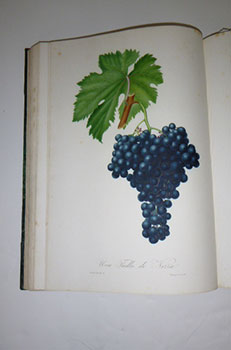
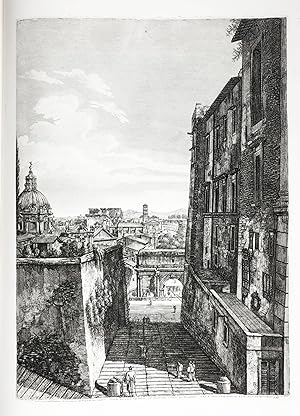
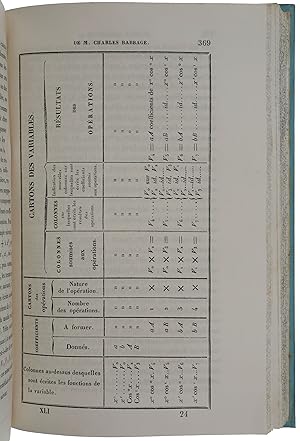

![Seller image for 12 [dodici] stampe a mano | arte concreta [.] Testo di | Giuseppe Marchiori for sale by Libreria Antiquaria Pontremoli SRL](https://pictures.abebooks.com/inventory/md/md30887651952.jpg)
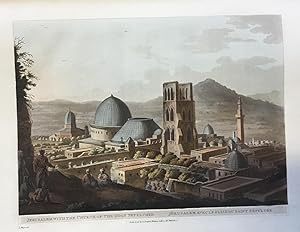

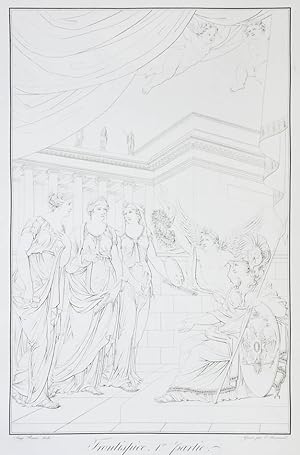
![Seller image for Stanze di cultura sopra gli horti de le donne, stampate nuovamente. Et historiate [avec] Stanze in lode della menta for sale by Librairie Le Feu Follet](https://pictures.abebooks.com/inventory/md/md22813788777.jpg)
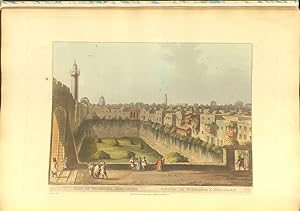
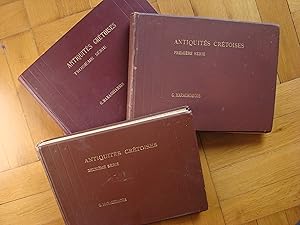

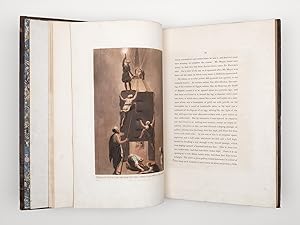
![Seller image for Semplici Liquali in piu Pareri à diuersi nobili huomini appaiono. - [THE GREATEST BOOK OF BOTANY EVER WRITTEN IN ITALY] for sale by Lynge & Søn ILAB-ABF](https://pictures.abebooks.com/inventory/md/md11911687606.jpg)
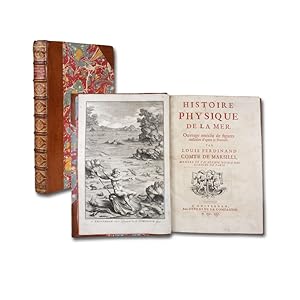
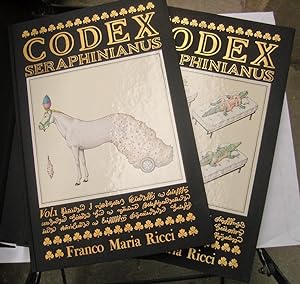
![Seller image for L eredità di Dante [TIRATURA DI TESTA] for sale by Libreria Antiquaria Pontremoli SRL](https://pictures.abebooks.com/inventory/md/md30068676369.jpg)
![Seller image for Il guanciale [Esemplare con numerosi interventi autografi dell autore] for sale by Libreria Antiquaria Pontremoli SRL](https://pictures.abebooks.com/inventory/md/md31382326408.jpg)
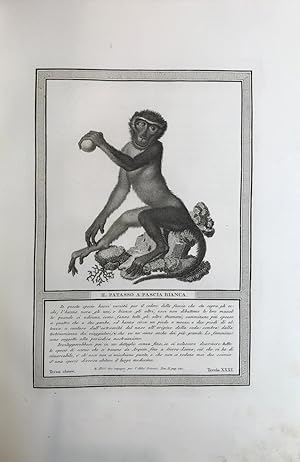
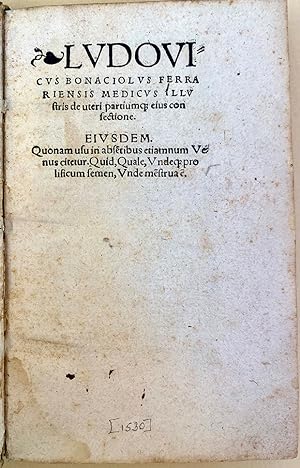
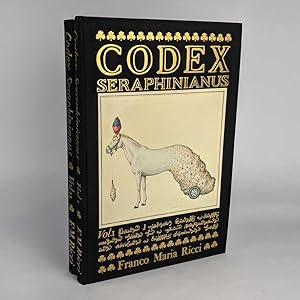
![Seller image for Savona [in copertina; al frontespizio:] Alla terra più rude al mare più limpido al cielo più azzurro scritti di Pennone disegni di Acquaviva stampe di Brizio for sale by Libreria Antiquaria Pontremoli SRL](https://pictures.abebooks.com/inventory/md/md31717118051.jpg)
